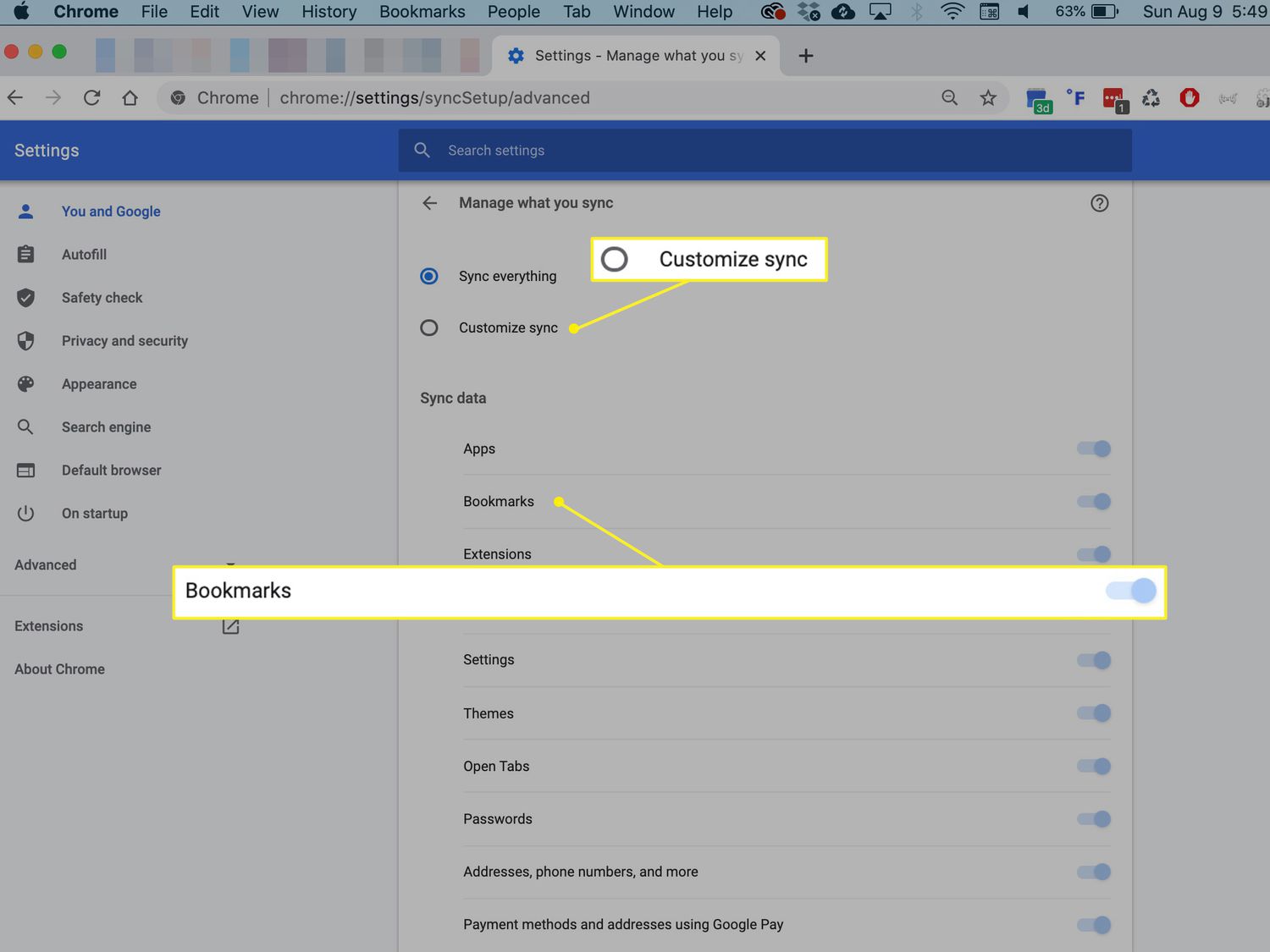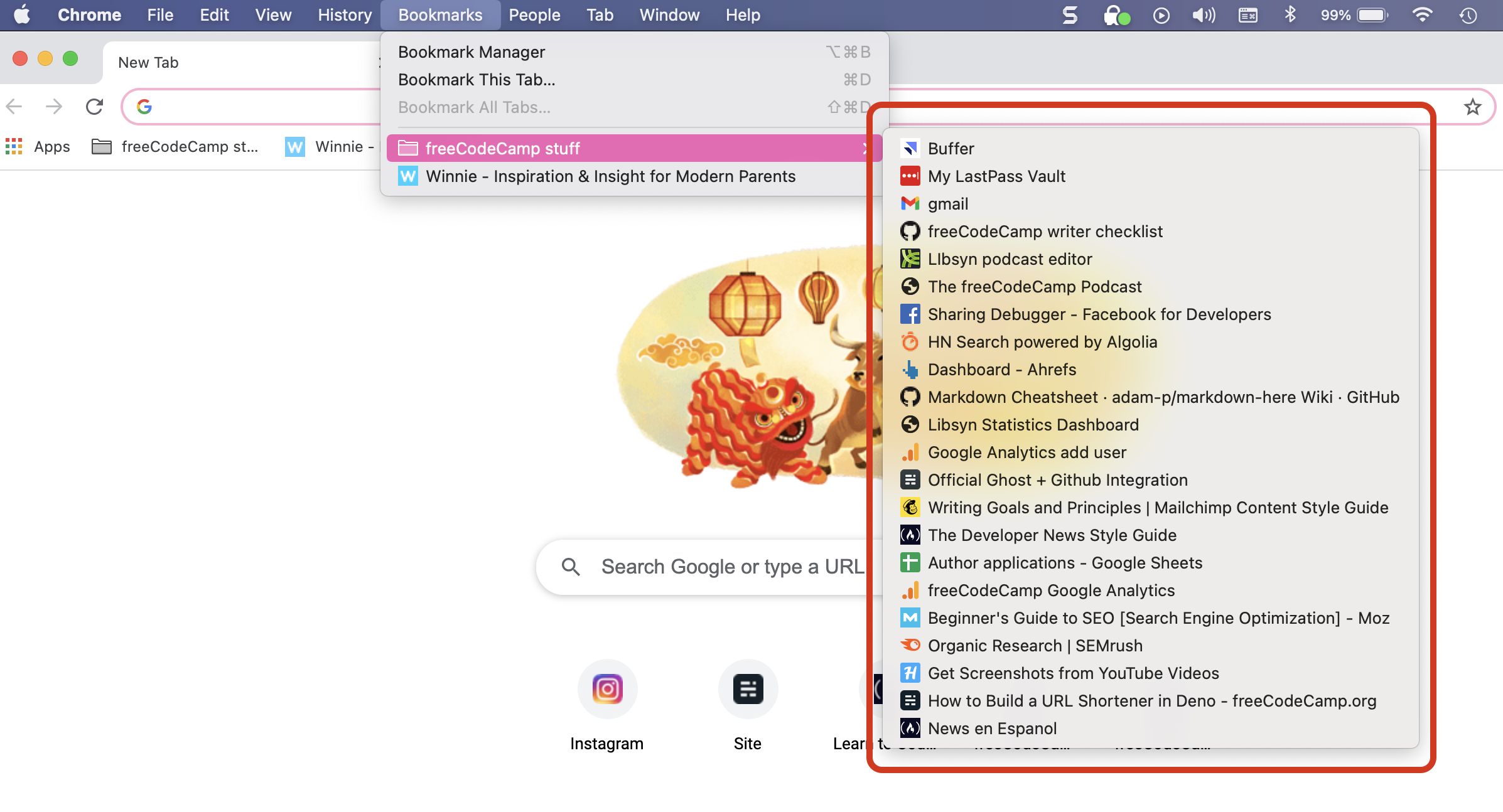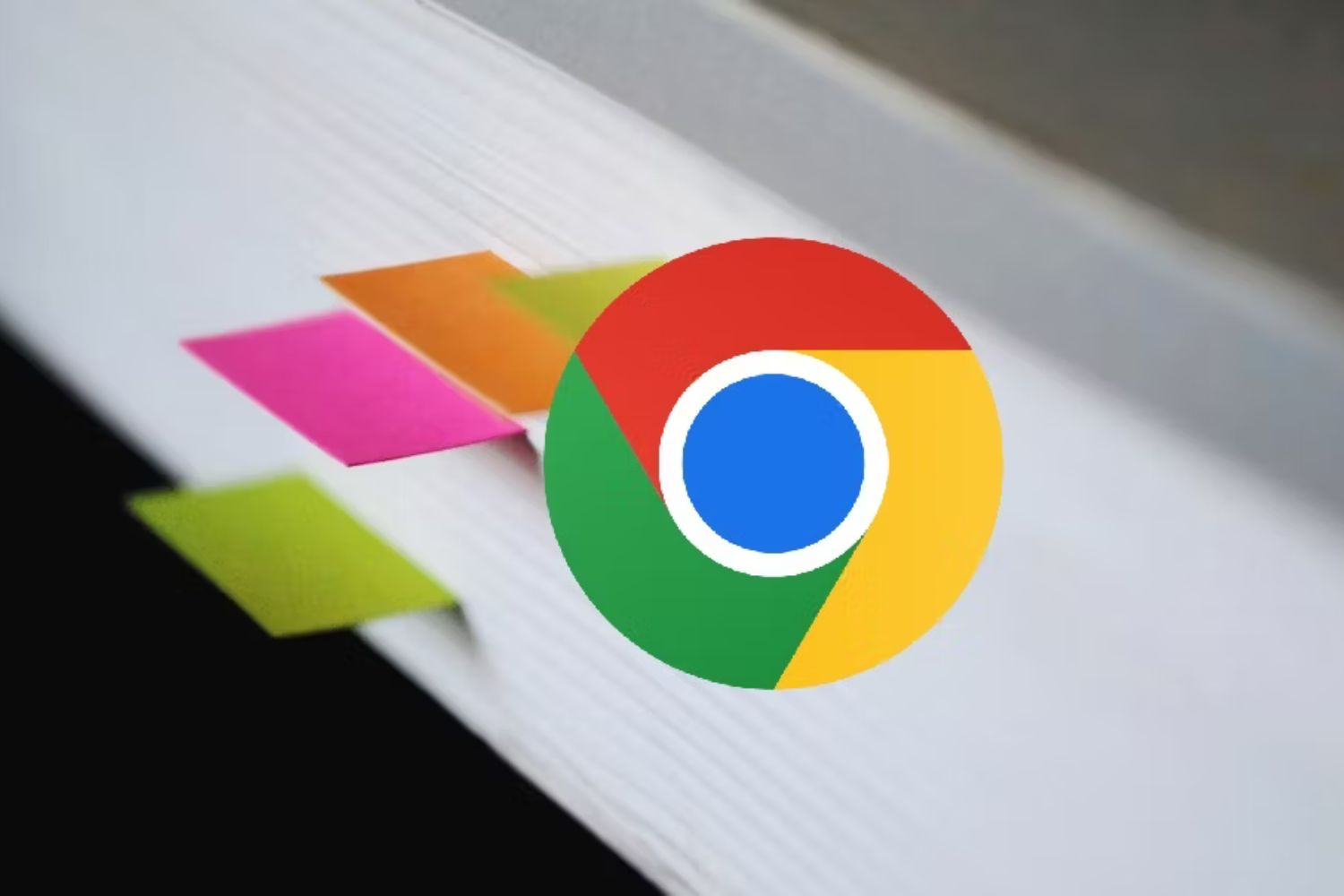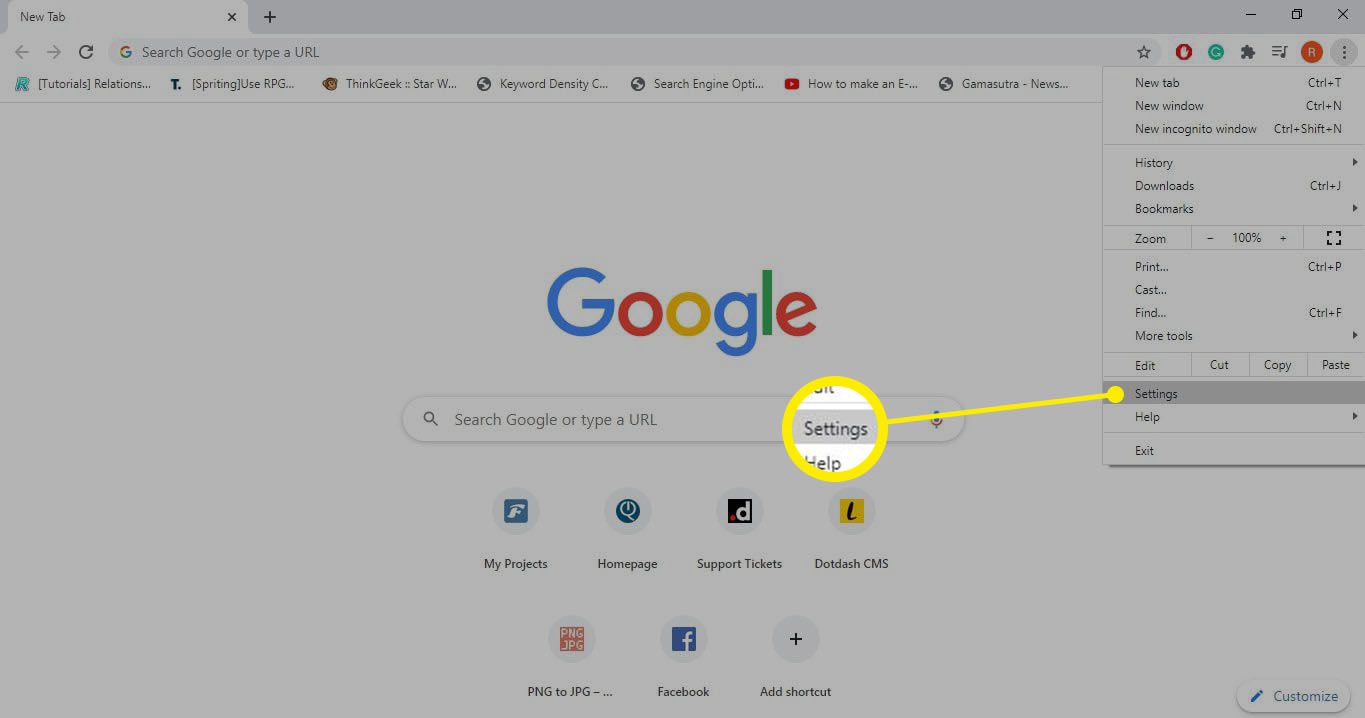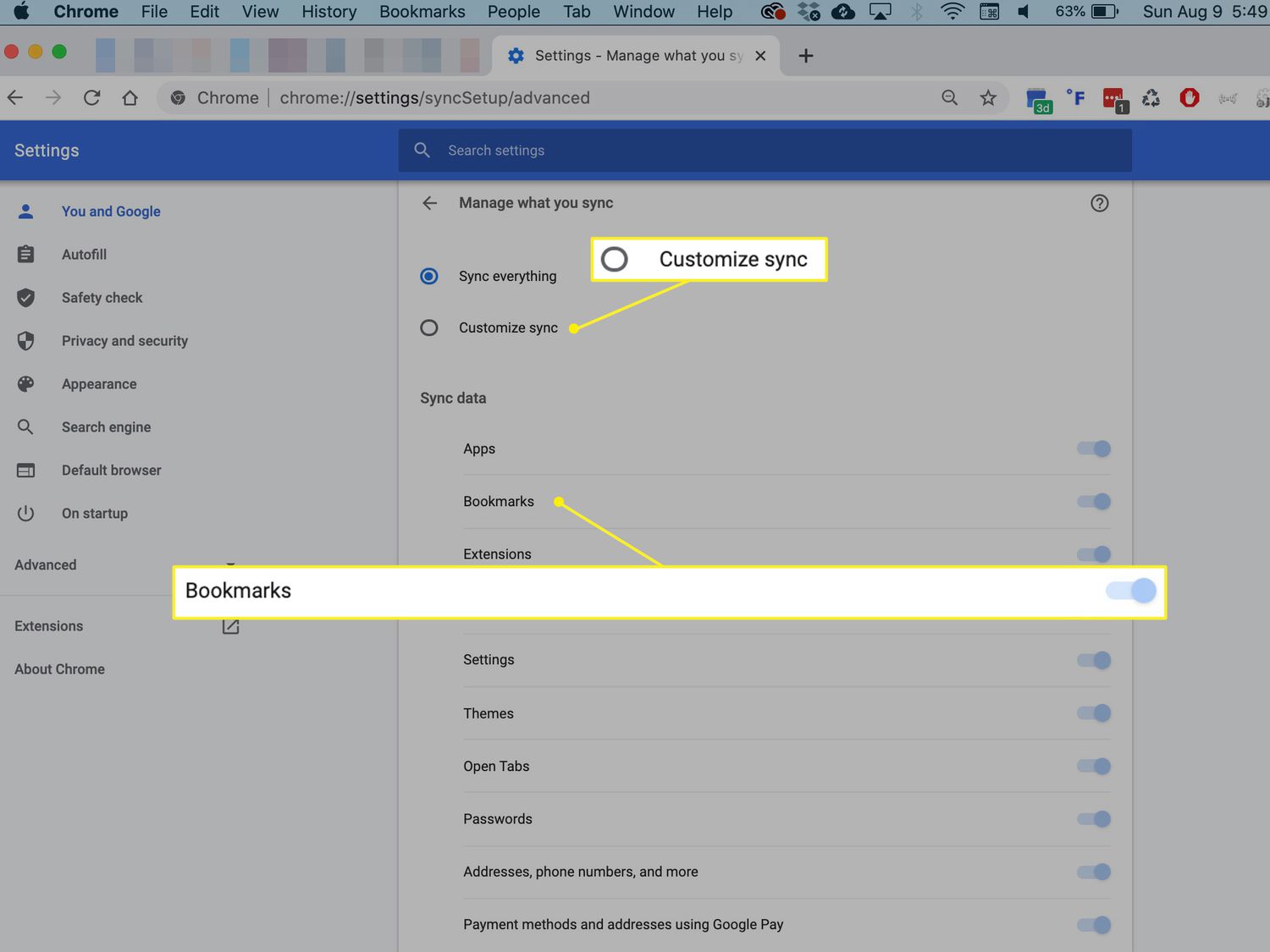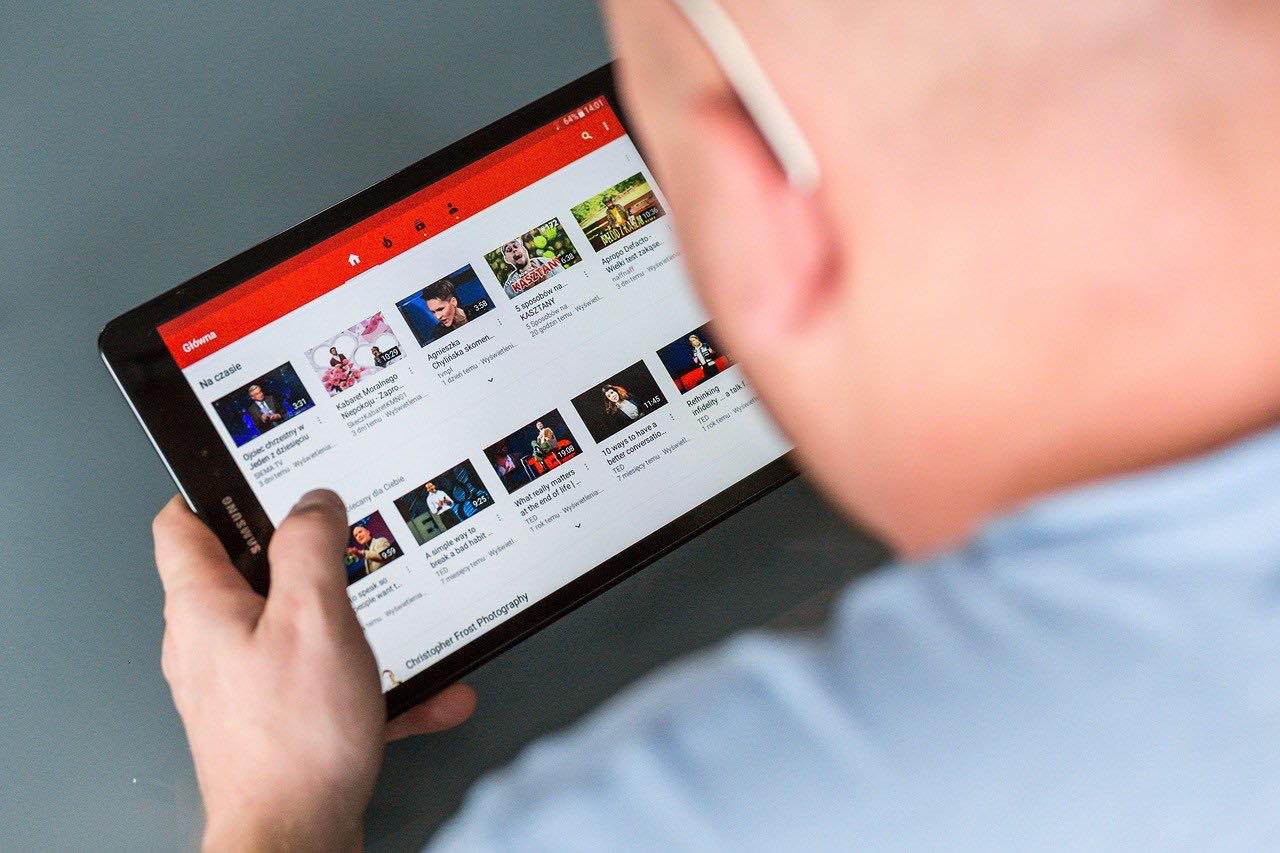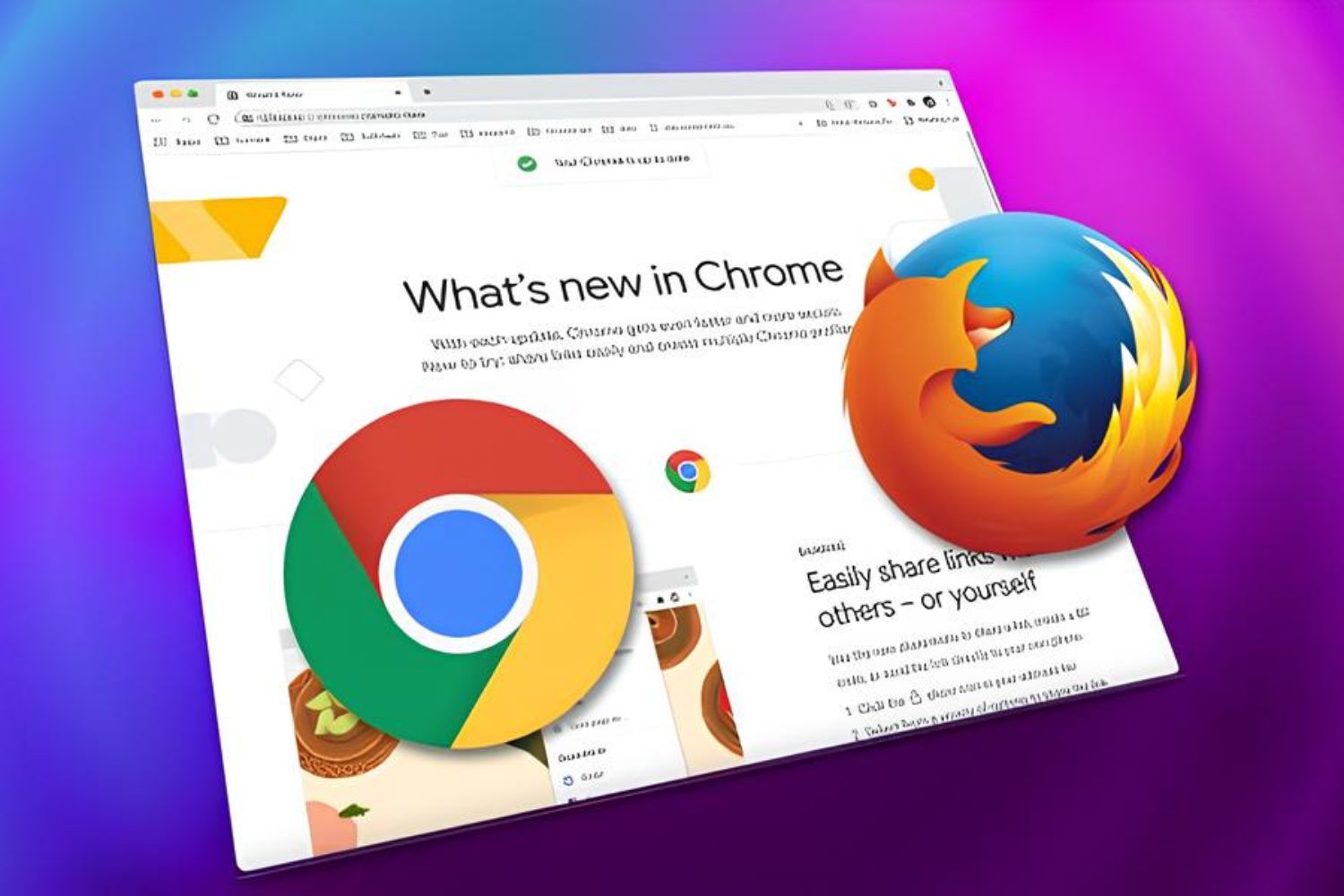Introduction
Are you tired of manually transferring your bookmarks from one device to another? Do you wish there was a simpler way to keep all your favorite websites and resources in sync across your devices? Well, you're in luck! With Chrome's powerful syncing feature, you can effortlessly ensure that your bookmarks are always up to date, no matter which device you're using.
Chrome Sync is a game-changer for anyone who relies on bookmarks to keep track of important webpages. Whether you're a student juggling research materials, a professional managing multiple work-related sites, or simply someone who loves to keep their online world organized, Chrome Sync is a lifesaver. By seamlessly integrating your bookmarks across all your devices, Chrome Sync eliminates the hassle of manual transfers and ensures that you have instant access to your favorite websites whenever and wherever you need them.
In this comprehensive guide, we'll walk you through the process of setting up Chrome Sync and syncing your bookmarks across your devices. We'll also address common troubleshooting issues that may arise along the way, ensuring that you can make the most of this powerful feature without any hiccups.
So, if you're ready to bid farewell to the days of painstakingly recreating your bookmark collection on every new device, let's dive into the world of Chrome Sync and discover how it can revolutionize the way you manage your bookmarks.
Setting Up Chrome Sync
Setting up Chrome Sync is a straightforward process that allows you to seamlessly synchronize your bookmarks across all your devices. By following a few simple steps, you can ensure that your favorite websites are always accessible, regardless of whether you're using your computer, smartphone, or tablet.
-
Accessing Chrome Settings: To begin, open Google Chrome on your device and click on the three-dot menu icon located in the top-right corner of the browser window. From the dropdown menu, select "Settings" to access the browser's settings panel.
-
Signing into Chrome: Within the Settings menu, scroll down and click on "Sign in to Chrome." If you don't already have a Google account, you'll need to create one. Otherwise, enter your Google account credentials to sign in.
-
Enabling Sync: After signing in, you'll see the option to enable sync. Click on "Sync" to access the sync settings. Here, you can choose the specific data you want to synchronize across your devices. To sync your bookmarks, ensure that the "Bookmarks" option is enabled.
-
Customizing Sync Settings: Chrome also allows you to customize your sync settings further. You can choose to sync additional data such as browsing history, passwords, and extensions. For the purpose of this guide, we'll focus on syncing bookmarks.
-
Verification and Confirmation: Once you've selected the data you want to sync, Chrome will begin the synchronization process. You may be prompted to verify your identity using two-factor authentication if it's enabled for your Google account. Follow the on-screen instructions to complete the verification process.
-
Confirmation and Completion: After verifying your identity, Chrome will start syncing your selected data, including your bookmarks. You'll receive a confirmation message once the synchronization is complete.
By following these steps, you can effortlessly set up Chrome Sync and ensure that your bookmarks are consistently updated across all your devices. With Chrome Sync in place, you'll never have to worry about manually transferring your bookmark collection again. Instead, you can focus on exploring the web and accessing your favorite sites with ease, knowing that your bookmarks are always just a click away.
Syncing Bookmarks Across Devices
Once you've set up Chrome Sync, the seamless synchronization of your bookmarks across devices becomes a reality. Whether you're switching between your laptop, smartphone, or tablet, accessing your favorite websites is now a hassle-free experience. Here's how you can ensure that your bookmarks are consistently available on all your devices:
Accessing Bookmarks on Different Devices
Upon enabling Chrome Sync, your bookmark collection becomes instantly accessible on any device where you're signed in to Chrome. Whether you're using a desktop computer, a laptop, or a mobile device, you can effortlessly access your bookmarks with a few simple clicks or taps.
Chrome on Desktop and Laptop
When using Chrome on your desktop or laptop, accessing your synced bookmarks is as easy as clicking on the bookmarks bar or navigating to the bookmarks menu. Your entire collection of bookmarks, organized into folders and subfolders, will be readily available, allowing you to quickly jump to your preferred websites without any manual effort.
Chrome on Mobile Devices
On your smartphone or tablet, the Chrome mobile app provides seamless access to your synced bookmarks. By tapping on the bookmarks icon, you can explore your entire bookmark collection, complete with the same folder structure and organization that you've set up on your desktop or laptop. This consistent experience ensures that you can easily access your favorite websites while on the go, without the need to manually recreate your bookmark collection on each device.
Real-Time Updates and Changes
One of the most powerful aspects of Chrome Sync is its real-time synchronization capability. When you add a new bookmark, edit an existing one, or reorganize your bookmark folders on one device, these changes are instantly reflected across all your synced devices. This means that any updates you make to your bookmarks are seamlessly propagated, ensuring that your collection remains consistent and up to date across all platforms.
Cross-Device Accessibility
Whether you're researching a topic on your laptop, reading an article on your smartphone, or referencing a website on your tablet, Chrome Sync ensures that your bookmarks are always within reach. This cross-device accessibility streamlines your browsing experience, allowing you to seamlessly transition between devices without losing access to your essential web resources.
By leveraging Chrome Sync to synchronize your bookmarks across devices, you can enjoy a unified browsing experience that transcends individual devices. With your bookmark collection effortlessly accessible on every device, you can focus on exploring the web and accessing your favorite websites without the burden of manual synchronization.
Troubleshooting Common Issues
While Chrome Sync is designed to seamlessly synchronize your bookmarks across devices, you may encounter occasional issues that can disrupt this harmonious process. Understanding and addressing these common issues can help ensure that your bookmark synchronization remains smooth and reliable. Here are some troubleshooting tips to tackle potential challenges:
Syncing Delays
If you notice a delay in the synchronization of your bookmarks across devices, it's essential to verify your internet connection. A stable and robust internet connection is crucial for the timely propagation of bookmark updates. Additionally, ensure that Chrome Sync is enabled on all devices and that they are actively connected to the internet. Sometimes, a simple refresh or restart of the browser can kickstart the synchronization process.
Conflicting Bookmarks
In some instances, conflicting bookmarks may arise when changes are made to the same bookmark on different devices before synchronization occurs. Chrome provides a dedicated section for resolving conflicting bookmarks. To address this issue, navigate to the bookmarks manager and look for the "Recently Added" folder. Here, you can review and resolve conflicting bookmarks by selecting the version you want to keep or merging the conflicting entries.
Sync Errors and Notifications
If you encounter sync errors or receive notifications indicating sync issues, it's important to investigate the underlying cause. Start by checking the sync status in Chrome's settings to identify any specific error messages. Common issues such as authentication errors or data corruption can be addressed by signing out of Chrome and signing back in. Additionally, clearing the cache and cookies in the browser settings can resolve certain sync-related issues.
Device-Specific Sync Problems
Occasionally, certain devices may exhibit unique sync problems that require individual attention. If a specific device is not reflecting the latest bookmark updates, consider restarting the Chrome app or browser on that device. Additionally, ensure that the Chrome app is updated to the latest version, as newer releases often include bug fixes and improvements related to sync functionality.
Data Loss Prevention
To prevent potential data loss during the sync process, it's advisable to periodically export your bookmarks as a backup. Chrome allows you to export your entire bookmark collection as an HTML file, which can be stored securely on your device or cloud storage. This precautionary measure ensures that even in the rare event of sync issues, you have a backup of your bookmarks that can be easily imported back into Chrome.
By familiarizing yourself with these common troubleshooting strategies, you can proactively address any issues that may arise during the bookmark synchronization process. Chrome Sync is a robust feature that, when properly maintained and managed, provides a seamless and reliable experience for keeping your bookmarks in sync across all your devices.
Conclusion
In conclusion, Chrome Sync offers a transformative solution for seamlessly managing and synchronizing your bookmarks across multiple devices. By leveraging this powerful feature, users can bid farewell to the tedious task of manually transferring bookmarks and embrace a streamlined browsing experience that transcends individual devices. The ability to access a unified collection of bookmarks on desktops, laptops, smartphones, and tablets ensures that essential web resources are always within reach, regardless of the device being used.
Chrome Sync not only simplifies the process of syncing bookmarks but also ensures real-time updates and changes across all devices. This dynamic synchronization capability eliminates the need for manual intervention when adding new bookmarks, editing existing ones, or reorganizing the bookmark hierarchy. The consistent and instantaneous propagation of these updates enhances the overall browsing experience, allowing users to focus on exploring the web without the burden of managing bookmark synchronization.
Furthermore, the troubleshooting tips provided in this guide empower users to address common issues that may arise during the synchronization process. By understanding how to tackle syncing delays, conflicting bookmarks, sync errors, and device-specific problems, users can maintain a smooth and reliable bookmark synchronization experience. Additionally, the proactive approach of periodically exporting bookmarks as a backup serves as a safeguard against potential data loss, ensuring that users can restore their bookmark collection if unforeseen sync issues occur.
Ultimately, Chrome Sync represents a significant advancement in simplifying the way users interact with their bookmarks across devices. Whether it's for academic research, professional endeavors, or personal interests, the seamless synchronization of bookmarks facilitated by Chrome Sync enhances productivity and convenience. With the ability to effortlessly access and manage bookmarks on any device, users can navigate the web with ease, knowing that their favorite websites and resources are consistently available.
In embracing Chrome Sync, users can embrace a digital ecosystem where their bookmark collection evolves in harmony across all their devices, reflecting their browsing habits and preferences in real time. This unification of bookmarks not only streamlines the browsing experience but also underscores the potential for technology to seamlessly integrate and enhance everyday tasks. As Chrome Sync continues to evolve, it stands as a testament to the power of synchronization in simplifying and enriching the digital landscape.







